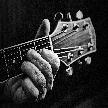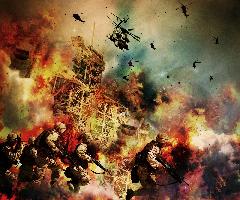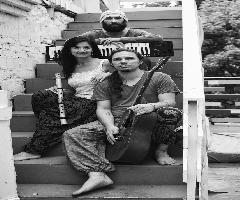

- Category :Cinema
Phantasmagoria was a theater form that made use of the futuristic magic lantern, an early image projector to portray gothic and spine chilling images of skeletons, ghosts, and demons, on walls, smoke and semi transparent surfaces. Although projection techniques have changed over the years, the rear projection used in this form of ghoulish theater remains a pioneer in terms of effects and images created. This article brings to life the history of Phantasmagoria, the earliest projection techniques used in theater to bring alive the unreal.
Creators of the magic lantern- How Phantasmagoria came into being
Credit to creating the magic lantern goes to Christiaan Huygens and Athanasius Kircher. Though magic lanterns created by both Huygens and Kircher were drastically different, combination and concepts used in their devices led the way to the emergence of slide projector which gave birth to motion picture projector. Kircher’s concept lantern consisted of a concave lens and candle design with a tube fitted at sides to hold lenses on either side, while Huygens concept used hand painted images on glass that were magnified and projected. It was illusionists, séances entertainers and magicians that took a liking to the magic lantern and used it in their stage shows to create atmospheric effects. The first person to dwell in concepts of phantasmagoria was Johann Georg Schropfer. He used the magic lantern to project eerie images and the appearance of ghosts in his acts.
History of Phantasmagoria
The roots of phantasmagoria emerge late in the 17th century.
It was Paul Philidor who first made the use of magic lanterns in an attempt to add visual dynamics to performance. He was associated with world of entertainment séances and used magic lanterns to portray ghostly images in his shows. Philidor brought to life Phantasmagoria influenced by Joseph Pinetti an acclaimed magician of his time, and Johann Georg Schropfer a master illusionist and pioneer in entertainment séances, one of the first to use magic lanterns in projection shows. Philidor’s shows that involved projection images of macabre, demons, phantoms and ghouls became hugely popular in Berlin and Vienna. Although Paul Philidor did bring Phantasmagoria to life, it was Etienne-Gaspard “Robertson” Robert, who popularized Phantasmagoria productions.
Etienne-Gaspard “Robertson” Robert- The Father of Phantasmagoria
Etienne-Gaspard “Robertson” Robert was a physicist and inventor who improvised with concepts of projection, visuals, images and sound. Robertson’s Phantasmagoria productions made use of moving images and sound effects to portray haunting. He used a number of magic lanterns to depict different types of eerie environments. Robertson is considered by many as the master of creating illusions of free-flowing ghosts using moving images surrounded with black. Robertson and his team would also incorporate voices to add dynamism to visuals and images. His phantasmagoria shows were so scary, audiences would often scream in horror and forget what was being portrayed was tricks.
During proceedings of a lawsuit he filed in 1799 against his former assistants for starting their own phantasmagoria production and showcasing his techniques, Robertson was made to reveal the secrets and techniques used with magic lanterns in his Phantasmagoria shows. After that incident, many productions that incorporated images using magic lanterns mushroomed, but none were able to capture the brilliance Robertson incorporated in his shows. Robertson’s productions in Phantasmagoria set a benchmark in projection, imagery and visuals and until today remain the most imitated.
Effects of Phantasmagoria on people
As phantasmagoria shows became widespread in the early 18th century, people actually started believing that images of phantoms, demons, skeletons, and haunting portrayed in shows were true, this caused fear among people ultimately affecting ticket sales of shows. To stop fear from spreading among people, creators of Phantasmagoria shows started announcing to audiences that what was being portrayed in the show was done purely for entertainment and visual pleasure. Most phantasmagoria showmen in the age of Romanticism issued verbal statutory warning to audiences before the start of their shows to stay safe from repercussions that stemmed from belief in the unreal that frequently occurred after a show.
Phantasmagoria emerged in the United States in 1803 sparked by interest in regard with fear and uncertainty at that time. Martin Aubee a former assistant of Robertson staged many Phantasmagoria productions across the United States before being outmoded by newer projection concepts.
Phantasmagoria influence on modern day film techniques
Phantasmagoria sparked to life through ghost stories and documents of haunting in the 17th and 18th century. Georges Melies an illusionist and filmmaker who is known for his early stop tick films borrowed heavily from parallel concepts of phantasmagoria to give theatrical shape and finesse to…
- Superimpositions
- Disappearances
- Transformations
- Appearance of Ghosts
- Rear projections
- Morbid Decapitations
Horror films owe a great deal to Phantasmagoria. Most modern day horror films bring to life unreal and morbid forms through concepts stop tick films borrowed from phantasmagoria.
Few theatrical troupes around the globe stage phantasmagoria projection shows. In the US phantasmagoria productions during Halloween are popular. The spine chilling moments phantasmagoria has brought to life through the magic lantern will remain a benchmark in projection techniques.
-
Previous
100 Greatest Death Metal Bands
Related Articles
100 Greatest Kishore Kumar Songs
Regarded by many the greatest playback singer in the Indian film Industry, Kishore Kumar was known for his melodic soulful voice. Here’s an epic showcase of the best Kishore Kumar songs..
100 Greatest Hollywood Action Movies Of 70s, 80s, 90s,
Action is one of the most popular film genres. The non-stop excitement in the form of physical feats of fighting and spectacular chases and stunts makes action films hugely popular with audiences.
100 Greatest 3 Piece Rock Bands: Trios That Rocked The
Since the early beginnings of rock music 3 piece bands have floored audiences with their powerful sound. Celebrate an ode to the best trios in rock music.








